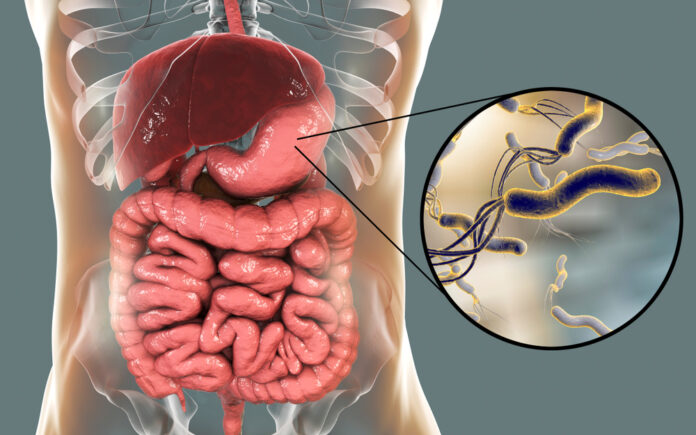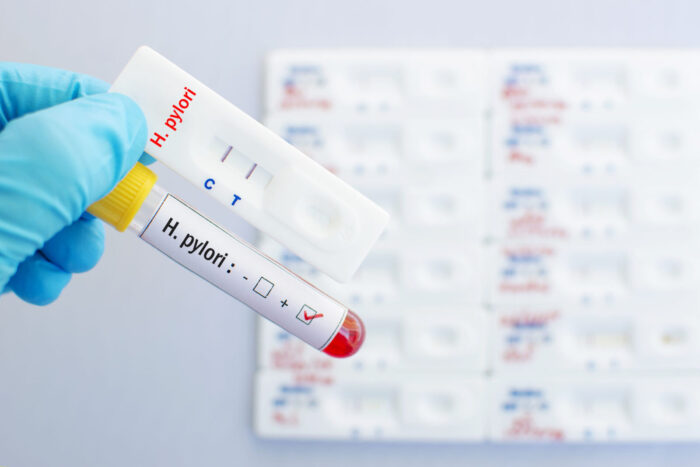
Pylori, scientifically known as Helicobacter pylori, is a stealthy bacterium that often takes up residence in the stomach lining of unsuspecting individuals. While it can coexist peacefully with some, for others, it can become the root cause of various gastrointestinal issues, including gastritis, peptic ulcers, and even stomach cancer. Detecting H. pylori infections in a timely and accurate manner is of paramount importance for effective treatment and prevention of complications. One highly effective diagnostic method for identifying this bacterium is the H. pylori stool test. Let’s explore what H. pylori is, the symptoms it can cause, and delve deep into how the stool test plays a pivotal role in the early detection of this bacterial infection.
Understanding H. pylori Infections
Pylori is a spiral-shaped bacterium that has a knack for affecting the stomach’s inner lining. As a Gram-negative bacterium, it packs a powerful punch and can lead to a wide range of digestive problems. But what makes H. pylori particularly concerning is its ability to remain relatively hidden for long periods in the stomach lining. It’s often transmitted via oral-to-oral or faecal-to-oral routes, and infection can occur in childhood and persist for years, sometimes even a lifetime if left unaddressed.
The Quiet Threat: Common Symptoms of H. pylori Infections

- pylori infections are notorious for being silent in many cases, meaning that infected individuals may experience no noticeable symptoms. However, when symptoms do occur, they can range from mild discomfort to severe pain and discomfort. Here are some of the most common symptoms associated with H. pylori infections:
- Abdominal pain: A characteristic burning or gnawing pain in the upper abdomen, particularly occurring between meals and during the night, is often associated with H. pylori infection.
- Nausea and vomiting: Frequent nausea and, in some cases, vomiting, can be signs of H. pylori infection.
- Loss of appetite: Many individuals with H. pylori infections report a decrease in appetite and unexplained weight loss.
- Bloating and fullness: A sensation of fullness, bloating, and discomfort in the upper abdomen, especially after meals, can be indicative of H. pylori infection.
- Gastrointestinal bleeding: H. pylori can lead to gastrointestinal bleeding, which may manifest as black or tarry stools, or in more severe cases, vomiting of blood.
- Unexplained fatigue: Chronic H. pylori infections can cause anaemia due to slow, long-term blood loss, resulting in fatigue and weakness.
- Peptic ulcers: H. pylori is a leading cause of peptic ulcers, which can lead to severe abdominal pain and, if left untreated, severe complications.
The H. pylori Stool Test: A Non-Invasive Diagnostic Tool
The quest to detect H. pylori infections has led to the development of various diagnostic methods, including blood tests, breath tests, and endoscopy. One highly valuable and minimally invasive option for diagnosis is the H. pylori stool test.
How the H. pylori Stool Test Works
The H. pylori stool test is a non-invasive method for detecting the presence of H. pylori bacteria in the gastrointestinal tract. Here’s a step-by-step breakdown of how the test works:
- Sample collection: To perform the H. pylori stool test, a small stool sample is collected. This can be done conveniently at home or at a healthcare provider’s office.
- Laboratory analysis: The collected stool sample is then sent to a laboratory for analysis. In the lab, the sample is scrutinised for the presence of H. pylori antigens, which are specific substances produced by the bacteria.
- Results: The test results are usually made available within a few days. They clearly indicate whether H. pylori is present in the gastrointestinal tract or not.
Benefits of the H. pylori Stool Test

The H. pylori stool test offers numerous advantages:
- Non-invasive and comfortable: Unlike endoscopy, which can be uncomfortable and invasive, the stool test is a non-invasive procedure, making it more comfortable for patients.
- Convenience: Collecting a stool sample is relatively easy and can be done at the patient’s convenience, either at home or at a healthcare provider’s clinic, eliminating the need for a hospital visit.
- High accuracy: The H. pylori stool test has a high accuracy rate in detecting the presence of the bacterium, making it a reliable diagnostic tool.
- Monitoring treatment: In addition to diagnosis, it can also be used to monitor the effectiveness of treatment once an H. pylori infection has been diagnosed.
- Less risky: In comparison to endoscopy, which carries some risks, the stool test is a safer option for individuals with certain medical conditions or those who want to avoid invasive procedures.
Interpreting H. pylori Stool Test Results
When you receive the results of your H. pylori stool test, there are a few possible outcomes:
- Positive: A positive result indicates the presence of H. pylori antigens in your stool, confirming an active infection.
- Negative: A negative result suggests the absence of H. pylori antigens, which is a good sign, but it doesn’t necessarily rule out a past infection or the potential for future infection.
- False positive or false negative: Like any medical test, the H. pylori stool test can produce false results. It’s essential to discuss your results with a healthcare professional to determine the appropriate course of action.

Early Detection, Better Health
Pylori infections are more common than we might realise and can lead to a spectrum of gastrointestinal issues. Detecting them early is pivotal to effective management and preventing complications such as peptic ulcers. The H. pylori stool test is a non-invasive, convenient, and highly accurate method for diagnosing this bacterial infection. If you are experiencing symptoms such as abdominal pain, nausea, unexplained weight loss, or any of the other common signs, it’s crucial to consult a healthcare provider.
They can recommend the stool test or other diagnostic methods to determine if H. pylori is the underlying cause of your discomfort. Early detection and appropriate treatment can help you regain your digestive health and overall well-being. Don’t let H. pylori hide in the shadows; seek the test, and take the first step towards better health.
















